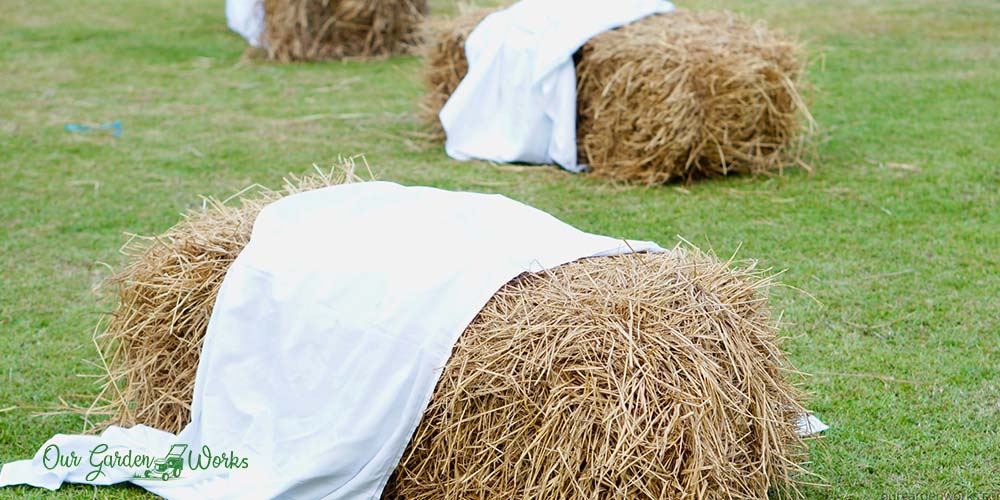From over-mowing to wearing spiked shoes, there are a lot of things we do for that green grass.
One practice that has sparked debates among growers is the use of a bale of straw. Can you cover new grass seed with straw or it’s another myth that’s waiting to be busted?
In this post, we will discuss the role of straw in lawn care, how it is different from hay, and the things you need to look out for when using it on your lawn.
Can You Cover New Grass Seed With Straw?
Yes, you can cover new grass seeds with straw to help them grow well and develop roots until they start sprouting.
The practice of adding straw on the newly seeded lawn is not one of the myths around lawn care because it has scientific and practical significance. These include:
- Helps grass seeds to protect them from being scattered by wind and drifted away by rainwater.
- Prevents newly generated plants from drying by slowing down the evaporation of water and keeping the soil moist while the seeds germinate.
- Doesn’t encourage the growth of seeds, unlike hay and other types of mulch.
- Protects grass seeds from birds and other wildlife animals.
Most gardeners who practice straw mulching usually remove the straw after the first grass mowing while some leave it in the soil to decompose and serve as a natural fertilizer.
It is important to keep the straw on the lawn until the grass is 2 to 3 inches tall when it can handle light foot traffic.
How much straw does a newly seeded lawn need?
The ideal thickness of straw that you should add to the lawn should be thin enough to let the sunlight, air, and moisture reach the grass seeds. Thick straw on top of the grass seeds will:
- Choke the new grass.
- Cause clumps of decomposing straw can be harmful to grass seedlings.
- Block sunlight and retain too much water in the soil, attracting fungal disease.
The Next Step: First Mowing
One of the common mistakes done by novice gardeners and homeowners is to cut the first grass blades too short. To keep the grass healthy and free from any injury, only cut ⅓ of the tip of the grass.
Since you’ll be mowing the grass while the straw is in place, there’s a higher chance that the straw will get caught in the mower.
So, it’s best to use a grass catcher to prevent the straw from clumping and choking the grass.
Leave The Straw or Not?
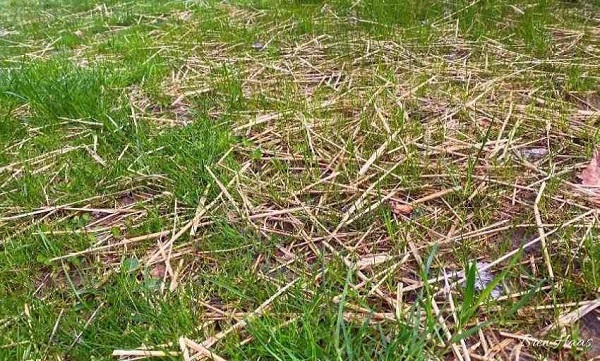
Leaving the straw or retaining them in the soil will not cause any problems.
However, there are some conditions that you must check before you let the straw rot on the lawn. These include
(1) There are times when there are a few weed seeds that might get into the straw that you put on the lawn. When you notice that the weeds are starting to sprout, it’s best to remove the straw after the first mowing to prevent them from germinating in the ground.
(2) If you plan to leave the straw, make sure that it is not more than ¼ inch thick to improve grass seed germination. Otherwise, the seeds will not get enough light and oxygen and fail to develop as desired.
(3) The telltale sign that the straw won’t cause any problems to your grass is when the layer of straw is thin enough to see the soil between the straw and the grass.
The Importance of Fertilization
Other than mulching the grass seeds with straw and mowing the grass seedlings for the first time, fertilization also plays a very significant role in lawn care.
Once the seedlings start to grow and you decide to leave the straw in the ground, it’s best to fertilize the grass after mowing.
The fertilizer will both aid in grass development and the decomposition of the straw.
When the fertilizer feeds the soil microbes, it will help speed up the decomposition process of the straw and make the nutrients readily available for the grass to absorb.
The Difference Between Straw and Hay
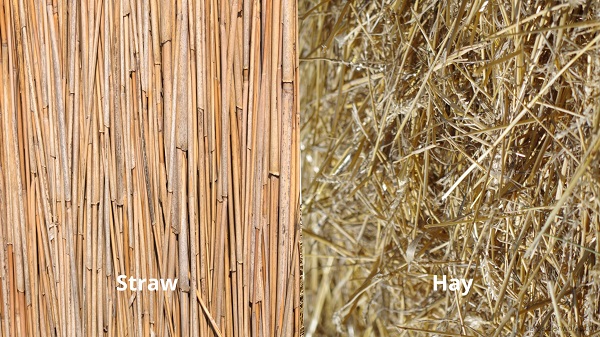
Straw and hay are often interchangeably used because they come from the same plant. However, they are entirely different when it comes to content.
Straw solely contains stems while hay contains stems, flowers, and seeds.
Their purpose in agriculture and horticulture are somehow very different. Check their respective functions below:
Hay: Hay contains the nutritious parts of the plant that is used to feed horses, cows, and other farm animals.
It is cut before the plant begins seed development which will affect its nutritional value. It is rich in fiber which is very healthy for livestock and other farm animals.
Hay is not an ideal mulch for grass seeds because it is often full of weed seeds which will cause new weed problems. It is preferably used to feed farm animals than be used in lawn care.
Straw: The straw is the stalk of the plant that no longer contains any nutritional value. It is the by-product after the seeds and the grain has been harvested. It is free from seeds which makes it the ideal mulching material for grass seeds.
Just like hay, straw comes in a bale and a bale can cover about 2,000 sq. ft. Since a newly seeded lawn only needs a thin layer of straw a bale can already go a long way.
What to look out for during seeding and using straw on grass seeds?
To secure a healthy and lush lawn, here are some things that you should look out for when tending to your newly seeded lawns:
(1) Using hay may include seeds that will compete with grass seeds. So, opt using straws to avoid such problems.
(2) The straw may help with the germination and development of grass seeds but it will certainly make your lawn look untidy for the first two months.
(3) If you decide to remove the straw from the lawn, make sure to rake them off gently. When done with strong pressure, raking can damage the new grass seedlings and cause them to wilt and die.
(4) Though it’s highly unlikely for straws to contain weed seeds, some suppliers don’t clean the straws well and leave them contaminated with tons of weed seeds. So, make sure to choose a supplier that is known to provide clean straws for lawn use.
(5) If the weather is extremely wet and humid, there’s no need to use straw mulching on newly seeded lawns because the soil gets all the moisture that it needs to germinate the grass seeds.
(6) Before you apply the straw to the lawn, make sure that the seeds are not pressed too deep into the soil to prevent them from drying and still access oxygen from the surface.
Alternatives To Straw Mulch
Now, if you find straw a bit unsightly to have on the lawn, here are other materials that you can use as an alternative:
Peat Moss
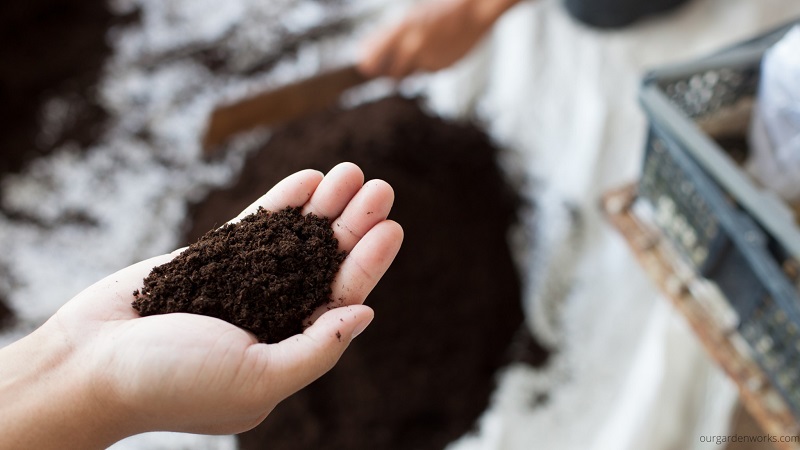
As an organic material, peat moss has been used in lawn care for thousands of years due to its nutrient-rich qualities.
Aside from retaining moisture and nutrients in the soil, it also helps improve poor soil quality and increase acidity. Peat moss is made of fine peat particles which also blend well in the soil and don’t look unsightly when applied.
If you plan to use peat moss instead of straw, make sure that you break down the clumps. It is notorious for moisture retention and clumps can rob off some water from your grass which can cause drought stress.
Pine Straw
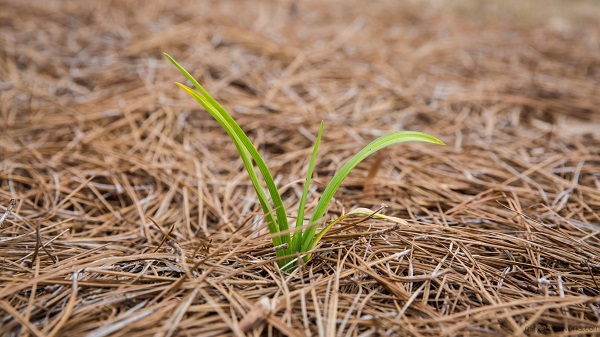
If your lawn has problems with being too alkaline, pine straw would be a better option than just your regular straw. It is aged pine needles collected and hand-raked at the bottom of pine trees.
Make sure to check the soil pH level of your lawn before adding the aged pine straw to avoid making it too acidic.
Pine straw has fewer chances of being contaminated with weed seeds, absorbs moisture, and improves heat retention for germinating grass seeds. Just make sure to use aged pine straw since fresh pine needles can inhibit seedling growth.
Compost

Compost is probably a no-brainer to add to your lawn however, using it to topdress a newly seeded lawn is an uncommon practice. Using it instead of straw will greatly nourish the soil and will take less time to decompose.
You only need a thin layer or about ¼ inch thick of compost on top of the seeds to ensure they will still get the sunlight, oxygen, and moisture that they need.
Sawdust
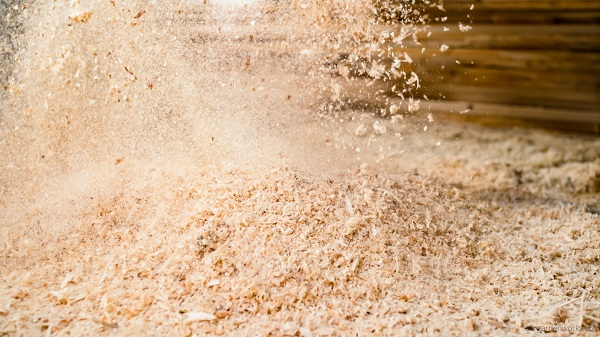
Sawdust is another option to mulch your grass seeds but use it with heed of caution.
Due to its small particles, it has a higher chance to clump and make a matting effect or clump on top of the seeds. Therefore, you should apply it very thinly over the seeds.
A thick layer of sawdust can cause excessive water retention, and blockage of light, and cause the roots of the grass seedlings to rot.
As a natural material, it contains nitrogen that will leech into the soil over time. So, make sure to use a fertilizer that has lower nitrogen content like all-purpose fertilizers.
Frequently Asked Questions (FAQs)
What is the best thing to cover new grass seed?
Straw is the best material to cover grass seeds because they have fewer chances of being contaminated with weed seeds and don’t change the acidity of the soil. Other perfect alternatives are a thin layer of grass clippings, peat moss, or compost.
How much straw do you put on top of grass seed?
Straw should be ⅓ to ¼ inch thick when applied on newly seeded lawns. The soil should still be visible so that the seeds will have access to light, moisture, and oxygen. Otherwise, they will fail to germinate.
How long do you leave straw on grass seed?
You can leave them in the ground until the seedlings are ready to be mowed which is around 2 to 3 weeks.
You have an option to leave them in the ground to rot or rake them off to make your yard look neat and clean. However, you should use the rake gently to avoid causing grass injury.
Final Thoughts
When someone asks the question, can you cover new grass seed with straw, you can now answer them with confidence through everything you’ve learned from this post.
Though grass can grow without mulching, using straw and other seed covers won’t hurt. In fact. It can even speed up the germination process unless you let some pesky ants carry the seeds around.
Do you personally cover your grass seeds or do you just leave them on their own after seeding?
Let us know your best practices in the comments below! Also, please don’t forget to share this with your friends who love tending their lawns.
